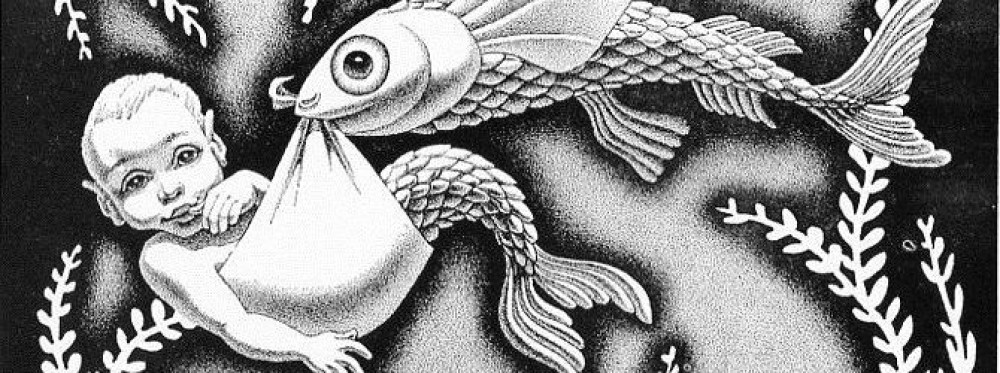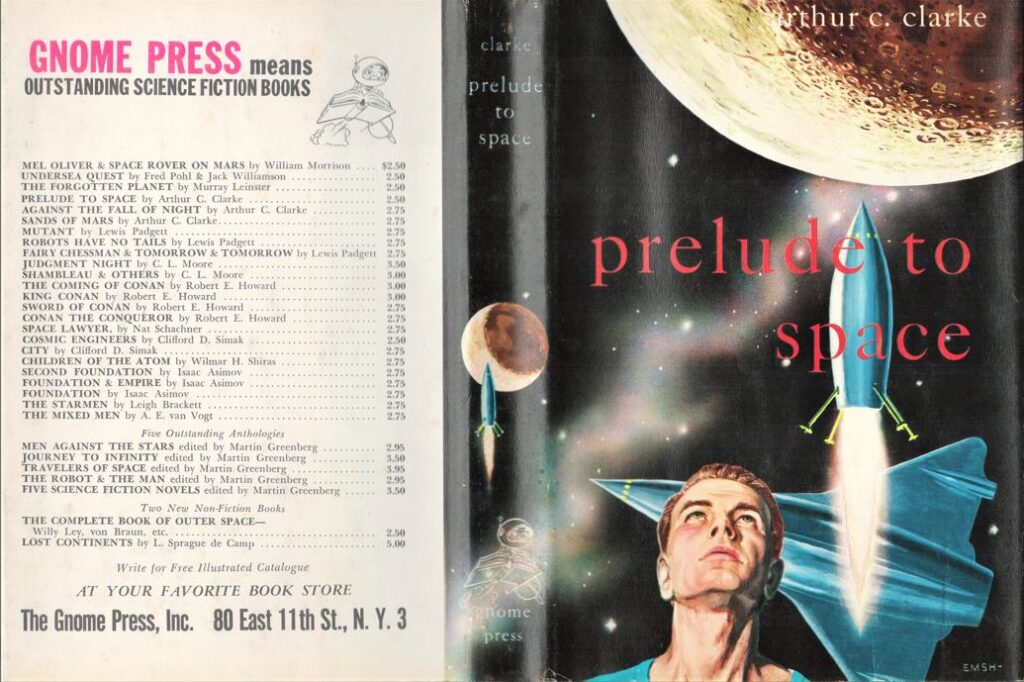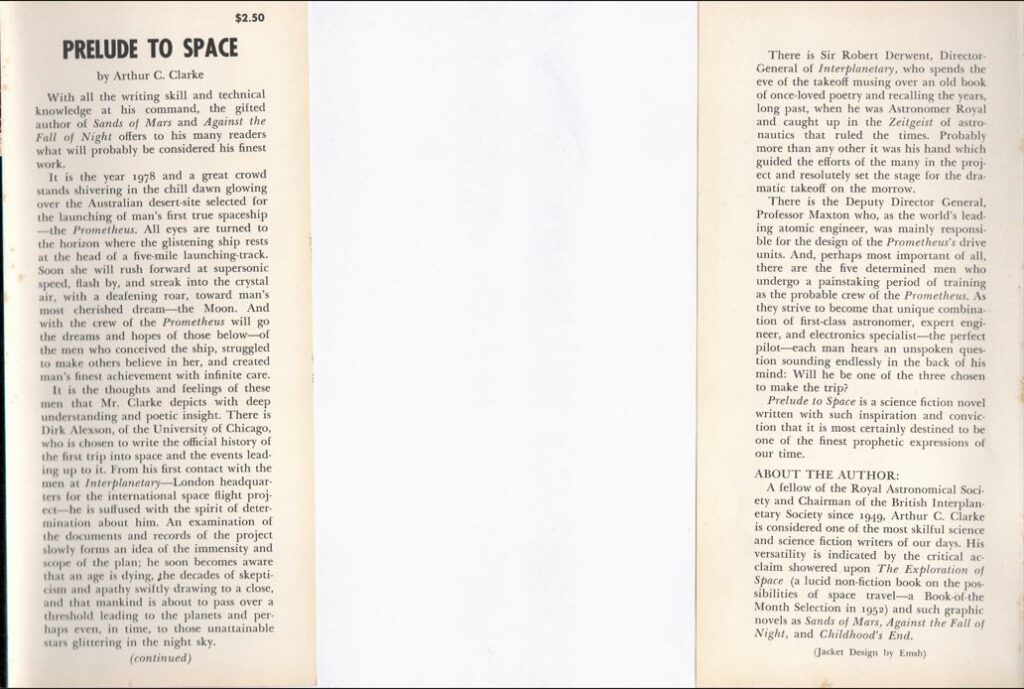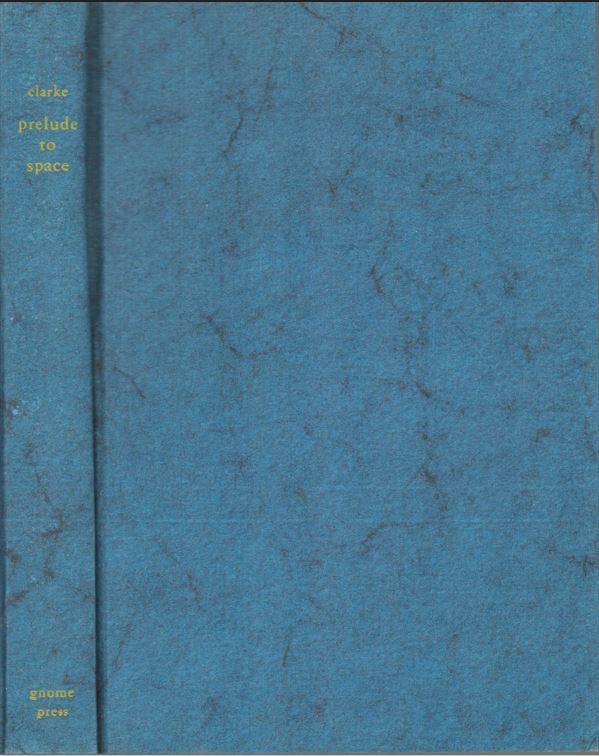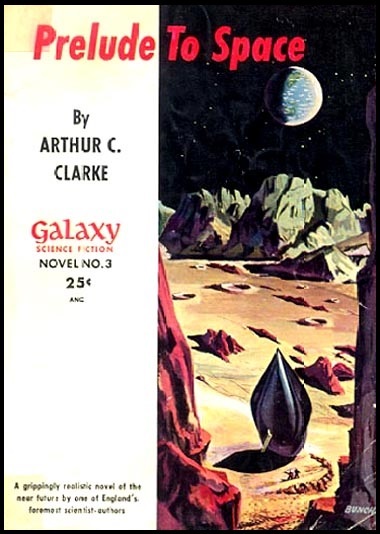Comments
Arthur C. Clarke started reading Amazing Stories in 1928, almost at the beginning of the Gernsback Era, but soon became besotted with Astounding, even before John W. Campbell took over as editor. He wrote for fanzines until joining the RAF, where he lived real-life science fiction as an instructor in the super-secret super-technology of radar. He took a joint BSc in physics and mathematics in 1948, by which time he already headed the British Interplanetary Society and promoted the concept of satellite communication through geostationary orbits.
Virtually no other writer had better credentials to become an Astounding writer. Not surprisingly, the first stories he wrote after the war were snapped up by Campbell in 1946. Thinking big, Clarke wrote Prelude to Space in 1947 and sat back to welcome the acclaim it would bring him. His nickname was not “Ego” for nothing. Nothing, though, was exactly what transpired. Nobody wanted the novel. Scott Meredith, Clarke’s agent, properly kept the manuscript in play, running it by every new line that popped up in an era that resembled an industrial toaster. He finally sent it to Horace Gold. Gold was a veteran f&sf author who had made the bombshell announcement that he was starting the first paperback line devoted to f&sf, the digest-sized Galaxy Science Fiction Novels, to be introduced at the same time he was launching his big-money backed science fiction magazine, also called Galaxy Science Fiction and also in digest format.
In November 1950, Clarke boasted that his book had been acquired for $750, anticipating a 150,000-copy print run. Gold later said that he paid the same $500 flat fee (no royalties) that he paid for all his other acquisitions, mostly reprints rather than originals. Whichever account is right, Prelude to Space appeared as Galaxy Novel #3 in early 1951.
The Galaxy Novels line faded quickly into oblivion for many reasons, including that it was digest-sized in a mass-market-paperback-sized world and that it mostly reprinted older works when its readers longed for outstanding new novels to match the breakthrough shorter works printed in the magazine. Collectors are the only ones who won. They can pick up a true first edition of Clarke’s very first novel in good condition for less than $5.00.
Following the one-two non-fiction/fiction punch of Exploration of Space and Sands of Mars in 1952, Clarke’s career took off so rapidly that by the time Gnome published Prelude in 1954, the “Books By” page listed three other novels, a short-story collection, and an additional volume of non-fiction. (Three more books would follow over the next twelve months.) Clarke’s English publisher, Sidgwick & Jackson, put out the first hardback edition of Prelude in 1953 and an Italian digest magazine, I Romanzi di Urania, had published it in July of that year. Ballantine Books, a force that was the rising star of the genre, had it out in mass market paperback in 1954. No matter. Everybody wanted Clarke, true fans and collectors wanted a hardback edition, and Greenberg had another hit.
Gnome Notes
The ISFDB reports that Clarke included “Minor textual variations from UK Sidgwick & Jackson edition” and CURREY notes “textual revisions” from the Galaxy Novel original.
CHALKER states that the first binding was in blue boards, with the black boards “done within months” of the blue with the gray cloth following in 1955. With Clarke a best seller, there is little reason to doubt that demand for the book was great enough for small bindings to sell out quickly. Which came first? CURREY says that the priority for the first two is not established. The blue boards are so much nicer that it’s hard to believe that Greenberg would insult a major author and his audience with the ugly black boards. One intriguing possibility occurs when the three variants are examined together. The pages for the blue boards are ragged-cut, while the other two are smooth-trimmed. The paper for the blue boards is also much whiter than the browned stock for the other two, which appear identical to one another and distinct from the blue variant. Additionally, the blue boards are about a tenth of an inch shorter than either of the others. My heretical opinion therefore is that the mottled blue boards aren’t merely the first state, the black boards and gray cloth comprise a true second printing.
Kirkus Reviews gave the expected publication date as March 1, 1954.
Reviews
Bob Fenley, Lubbock [TX] Avalanche-Journal, Feb. 18, 1951
No sixteen-eyed methane breathing polyps or murky Martian maidens trying to seduce the secret of a monkey-wrench atomic disintegrator from psychotic nuclear scientists, this is a straight-forward account at man’s attempt to send a rocket to the moon some 30 years hence. [review of the Galaxy Novel edition]
“FJK ,” Hutchinson [KS] News Herald, March 21, 1954
The cover is futuristic and the contents are simply out of this world.
Villiers Gerson, New York Times Book Review, March 28, 1954
Here is extrapolation based upon such careful research, written so skillfully and lucidly, as to become extraordinarily real… Mr. Clarke has a fine way with a word. One gets to know, to like, or to have compassion for the very human beings who fill its pages. One of the best space-flight novels yet written, it is a find for every science-fiction fan.
Contents and Original Publications
• Parts One, Two and Three, and Epilogue (slightly expanded from New York: World Editions, Inc. [Galaxy Science Fiction Novel #3], 1951, with different chapter numbering).
Bibliographic Information
Prelude to Space, by Arthur C. Clarke, 1954, copyright registration 10Mar1954, Library of Congress Catalog Card Number 54-7257, title #39, back panel #26, 191 pages, $2.50. 5000 copies printed 1954, later printing date unknown. Hardback. Jacket design by Emsh. “First Edition” on copyright page. Printed in the U.S.A. by H. Wolff. Back panel: 31 titles. Gnome Press address given as 80 East 11th St., N. Y. 3
Variants, in order of priority
1). (CURREY A) Mottled blue and black boards, spine lettered in yellow.
2). (CURREY B) Black boards, spine lettered in red.
3). (CURREY C) Gray cloth, spine lettered in red.
True first edition
New York: World Editions, Inc. (Galaxy Science Fiction Novel #3), 1951.
Images
